Sputnik 1! 7 Fun Facts About Humanity's First Satellite
Each year, the first week of October kicks off the United Nation's World Space Week, which celebrates the world's achievements in space since the dawn of the Space Age on Oct. 4, 1957 with the launch of Sputnik, the world's first artificial satellite. Find out how to celebrate World Space Week 2020 here.
Read on below to see photos of Sputnik and its legacy!
The launch the Soviet Union's Sputnik 1 on Oct. 4, 1957 kicked off the space age and the Cold War space race, the latter of which peaked when Apollo 11 astronauts Neil Armstrong and Buzz Aldrin stepped onto the surface of the moon in July 1969.
Here are a few fun facts you may not know about Sputnik 1 and its brief but world-changing mission.
Related: Sputnik 1, Earth's First Artificial Satellite in Photos
Sputnik 1 was the size of a beach ball
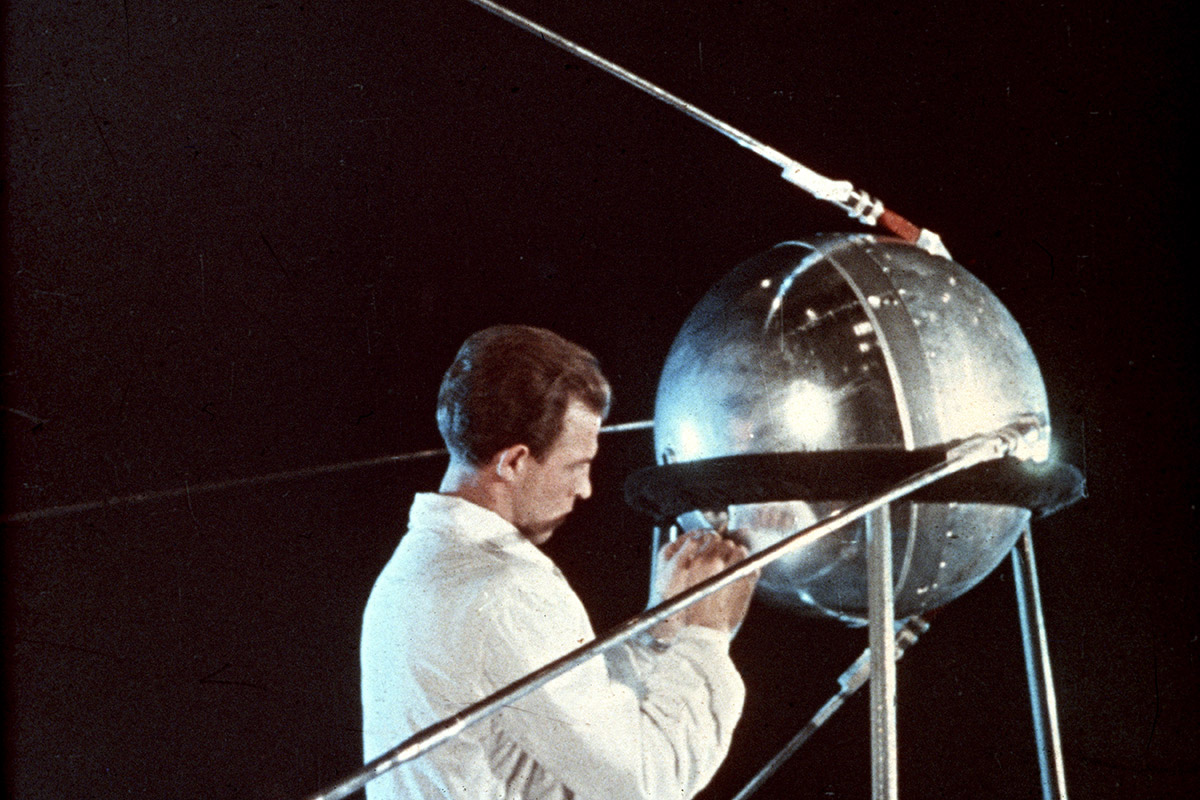
Sputnik 1 weighed 184 lbs. (83 kilograms) and was 23 inches (58 centimeters) wide. (This measure refers to the satellite's body; Sputnik 1 also featured two double-barreled antennas, the larger of which was 12.8 feet, or 3.9 meters, long.)
So, the satellite was quite small compared to the spacecraft of today, such as NASA's Cassini Saturn orbiter, which was about the size of a school bus. But lofting something as heavy as Sputnik 1 was quite a feat in October 1957. Two months later, the United States tried to launch its first satellite — the 3.5-lb. (1.6 kg) Vanguard Test Vehicle 3 (TV3) — and failed.
The Soviet Union had been aiming bigger
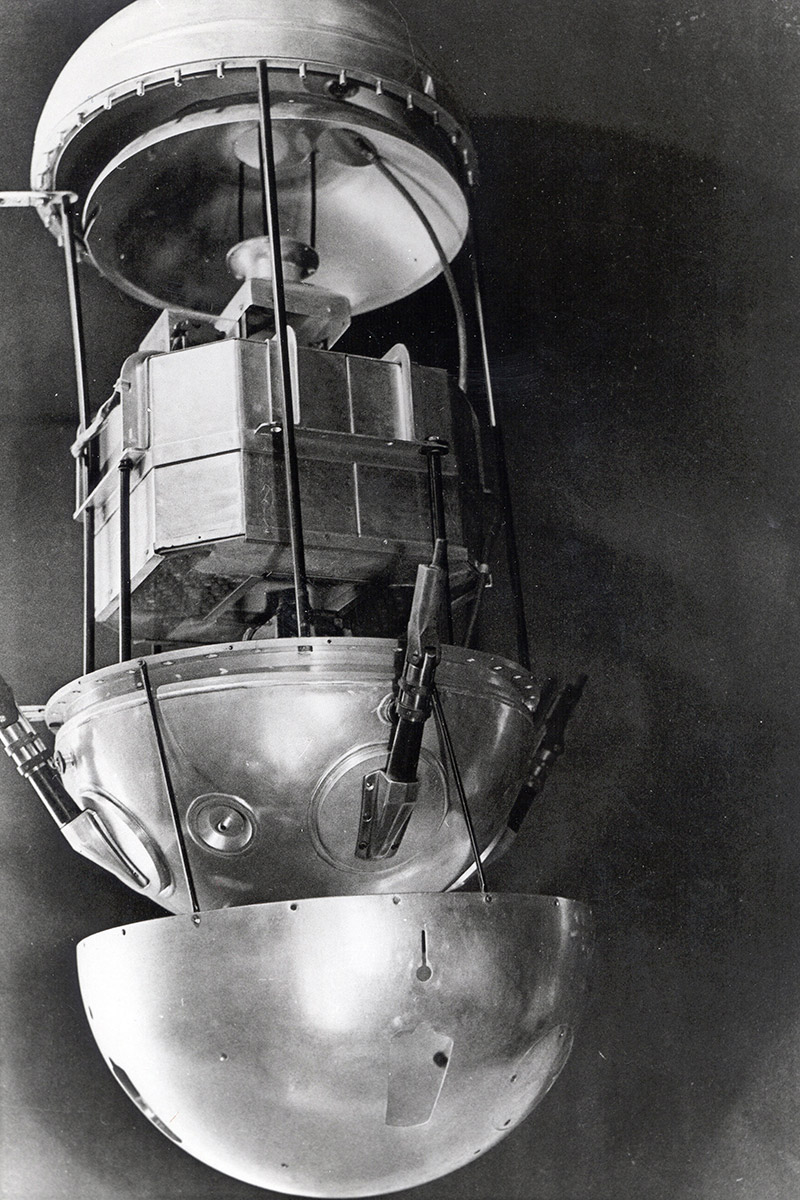
Soviet space officials had wanted the nation's first satellite to be much bigger than a beach ball. The original plan called for lofting a nearly 3,000-lb. (1,400 kg) craft outfitted with a variety of scientific instruments.
But development of this satellite, code-named "Object D," progressed more slowly than expected, and Soviet officials grew increasingly worried that the United States might beat them to space. So, they decided to precede the launch of Object D with a "simplest satellite," or "prosteishy sputnik" in Russian. Indeed, Sputnik 1 was also known as PS-1, Anatoly Zak noted at RussianSpaceWeb.com. (The literal translation of "sputnik," by the way, is "traveling companion.")
Sputnik 1 carried no scientific instruments. However, researchers did learn some things about Earth's atmosphere by studying the beep-beep-beep radio signals emitted by the satellite.
The hulking Object D reached orbit as Sputnik 3 in May 1958, six months after Sputnik 2, which famously lofted a dog named Laika.
The launch almost failed
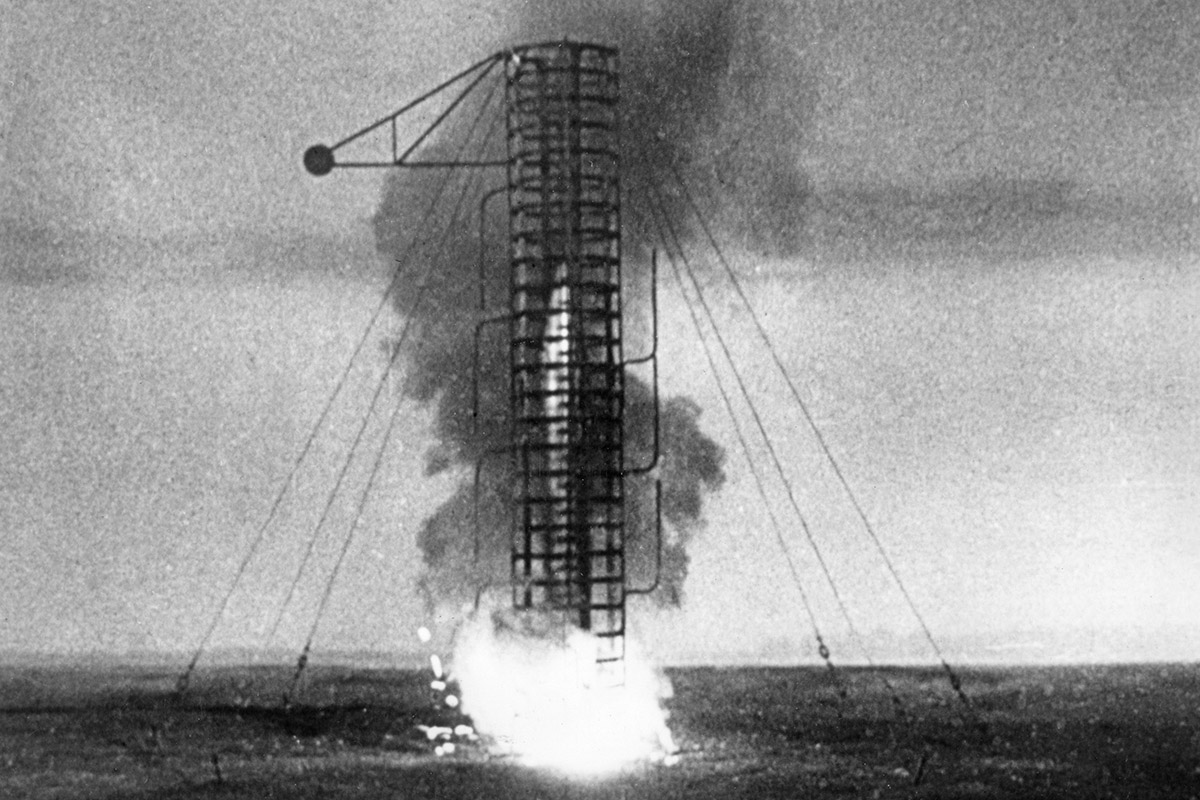
Sputnik 1 came perilously close to suffering the same fate as the United States' TV3 satellite, which was destroyed in a launch failure on Dec. 6, 1957.
Sputnik 1 was lofted by an R-7 rocket, which consisted of four first-stage boosters — known as Blocks B, V, G and D — strapped onto a core second stage (Block A). During the launch, the Block G booster's main engine reached its intended thrust levels later than expected.
"As a result, 6.5 seconds after the launch, the rocket started to pitch, deviating around 1 degree from the nominal trajectory 8 seconds after the liftoff," Zak wrote. "In the effort to correct the increasing pitch angle, steering engines No. 2 and [No.] 4 on the core stage rotated as much as 8 degrees; similar engines on strap-on boosters of Block V and D rotated as much as 17-18 degrees, while tail air rudders rotated 10 degrees.
"Only a split second remained, after which the flight control system would terminate the flight of the underpowered rocket," he added. "Fortunately, the engine finally reached normal performance, and [the] rocket fully returned to nominal trajectory some 18-20 seconds after the liftoff."
Sputnik 1 eventually settled into an elliptical orbit, which took the satellite as close to Earth's surface as 142 miles (228 kilometers) and as far away as 588 miles (947 km). The satellite zipped around Earth every 96 minutes.
Its mission was brief
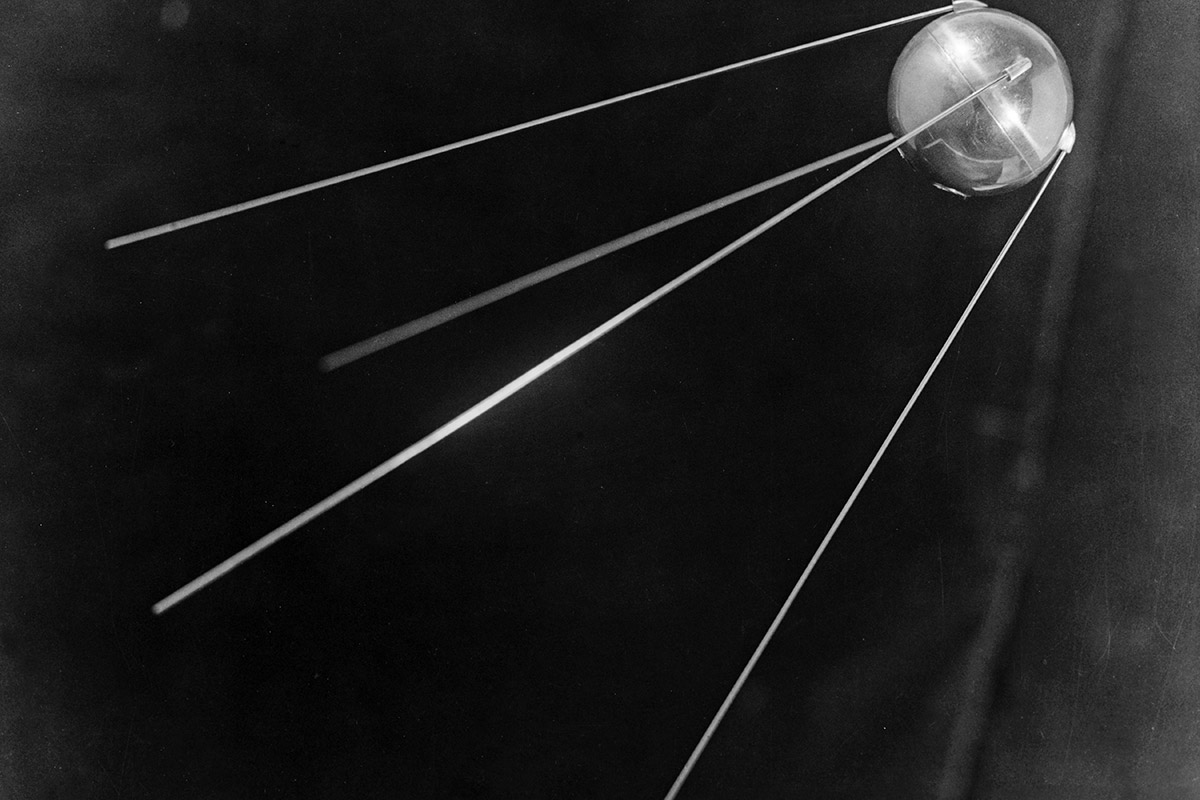
Sputnik 1 was powered by three silver-zinc batteries, which were designed to operate for two weeks. The batteries exceeded expectations, as the satellite continued sending out its radio signal for 22 days.
The spacecraft continued lapping Earth in silence for a few more months, its orbit decaying and sending the craft steadily closer to the planet. The satellite finally burned up in the atmosphere on Jan. 4, 1958.
Most Sputnik spotters actually saw its rocket
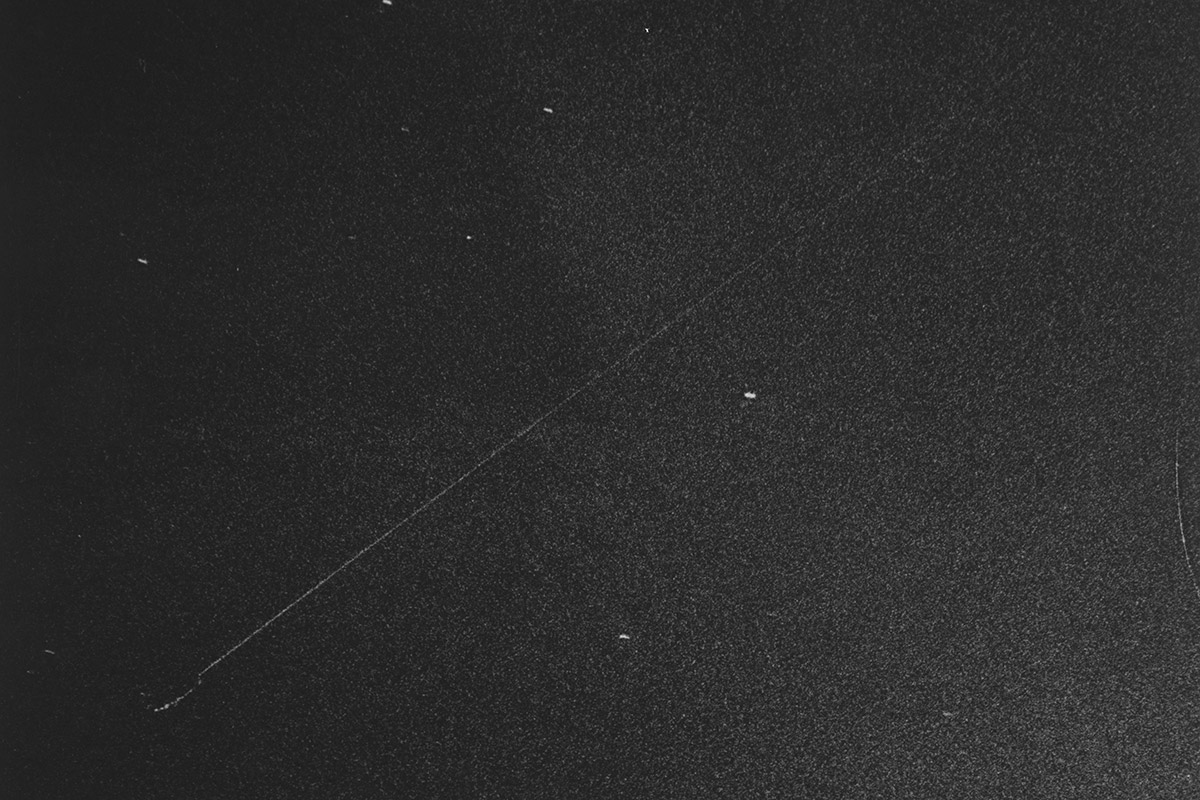
Though Sputnik 1 was small, it was quite reflective and therefore visible from Earth through a pair of binoculars (and perhaps even with the naked eye, if you had good vision and knew exactly where to look).
Many people reported seeing the satellite overhead in late 1957, but experts think most of these sightings actually involved the R-7. The rocket's 85-foot-long (26 m) core stage also reached orbit, and it was covered with reflective panels to make tracking it easier. This rocket body fell back to Earth on Dec. 2, 1957, according to Zak.
Sputnik 1 led to the creation of NASA and DARPA
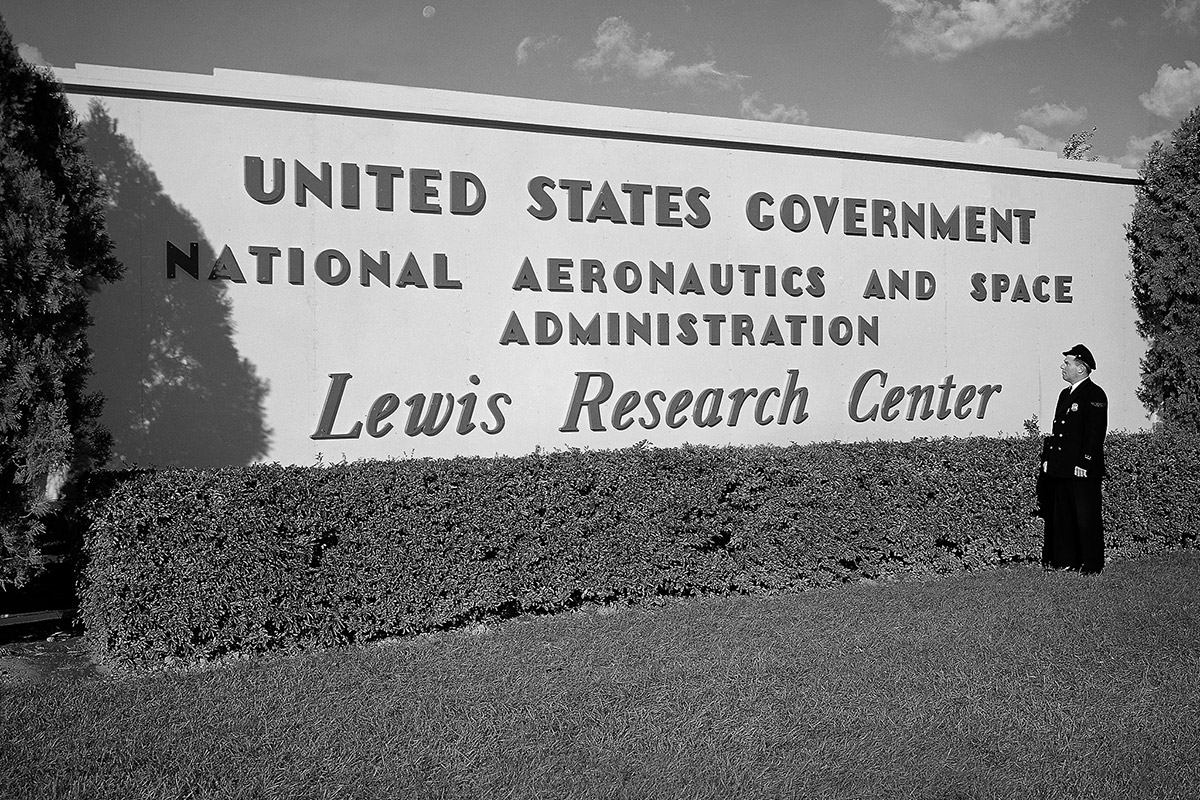
The launch of Sputnik 1 famously shook the United States.
"As a technical achievement, Sputnik caught the world's attention and the American public off guard," NASA historians wrote in 2007, in a piece marking the milestone's 50-year anniversary. "Its size was more impressive than Vanguard's intended 3.5-lb. payload. In addition, the public feared that the Soviets' ability to launch satellites also translated into the capability to launch ballistic missiles that could carry nuclear weapons from Europe to the U.S."
Such worries didn't dissipate after the U.S. launched its first successful satellite, Explorer 1, on Jan. 31, 1958. American officials took several measures to boost the nation's technological capabilities. These included creating the Advanced Research Projects Agency (later renamed the Defense Advanced Research Projects Agency, or DARPA) in February 1958 and NASA in October of that year. (NASA's precursor organization, the National Advisory Committee for Aeronautics, had been around since 1915.)
And in September 1958, Congress enacted the National Defense Education Act, which aimed to help increase the number and quality of U.S. scientists and engineers.
The satellite inspired the world 'beatnik'

Sputnik 1's huge cultural impact can be seen in the spate of "nik" neologisms its launch spurred, a few of which remain in use today. "Peacenik" is one well-known example, but the most famous is undoubtedly "beatnik," which San Francisco newspaper columnist Herb Caen coined in 1958. (And beatnik, in turn, sparked another coinage — "neatnik.")
Though Sputnik 1 raised "nik" to prominence in the U.S., the launch didn't actually introduce the suffix — which is roughly equivalent to "er" in English — into the American lexicon; select Russian and Yiddish words had already done that. The term "no-goodnik," for example, has been around since at least 1936, according to Merriam-Webster.com.
Follow Mike Wall on Twitter @michaeldwall and Google+. Follow us @Spacedotcom, Facebook or Google+.
Join our Space Forums to keep talking space on the latest missions, night sky and more! And if you have a news tip, correction or comment, let us know at: community@space.com.
Get the Space.com Newsletter
Breaking space news, the latest updates on rocket launches, skywatching events and more!

Michael Wall is a Senior Space Writer with Space.com and joined the team in 2010. He primarily covers exoplanets, spaceflight and military space, but has been known to dabble in the space art beat. His book about the search for alien life, "Out There," was published on Nov. 13, 2018. Before becoming a science writer, Michael worked as a herpetologist and wildlife biologist. He has a Ph.D. in evolutionary biology from the University of Sydney, Australia, a bachelor's degree from the University of Arizona, and a graduate certificate in science writing from the University of California, Santa Cruz. To find out what his latest project is, you can follow Michael on Twitter.
